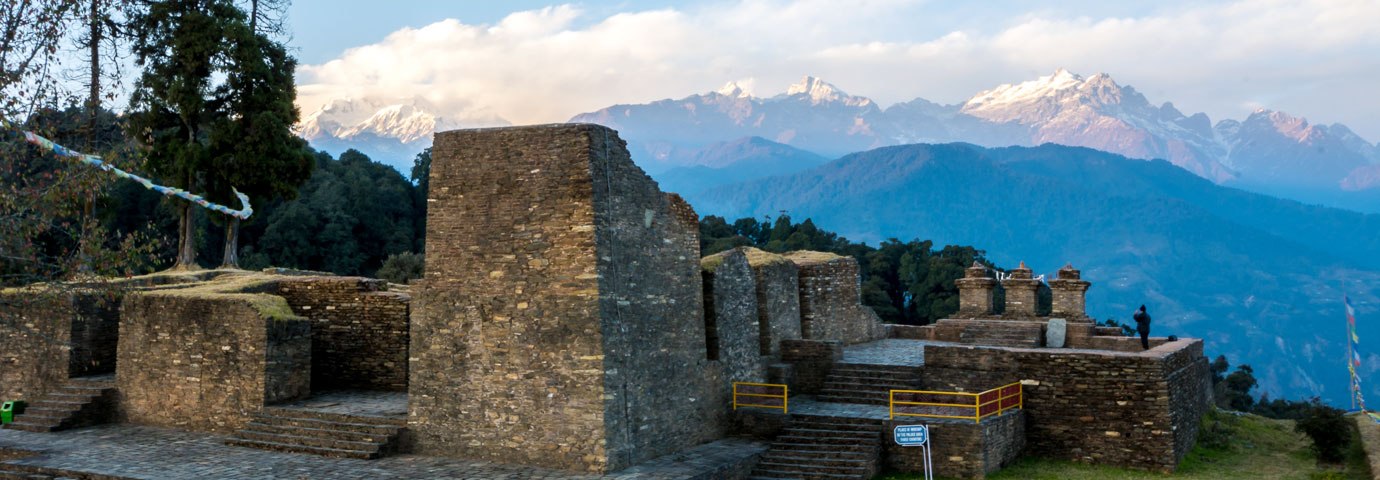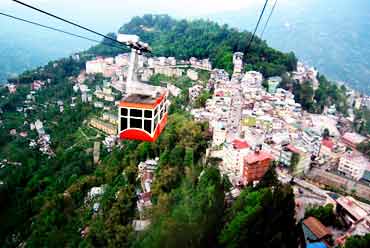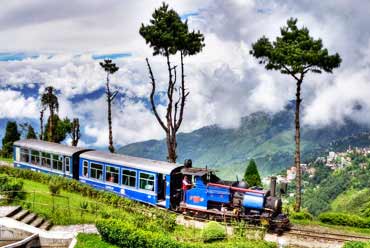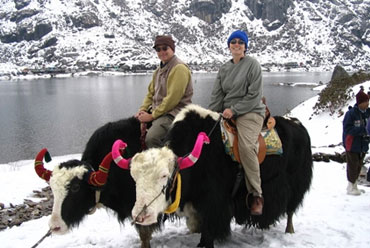Location: West Sikkim (close to the Pemayangtse Monastery)
How to reach: 2 km trek away from the Pemayangtse Monastery
Highlights: Superb Palace Ruins
Position towards the south-east of the famous Pemayangtse monastery is the ruins of one of the main attractions in Sikkim, Rabdentse Palace. The palace was established by Tensung Namgya, the second Chogyal (king) of Sikkim. After Yuksom, Rabdentse was Sikkim’s 2nd capital and remained so till 1814 A.D. The palace ruins are encircled by dense forest that also has a pond. This palace cum monastery complex though now almost in ruins, and now is maintained by the Archaeological Survey of India (ASI). From the monastery, a trek of 2 km takes you to this site. As you reach the top of the palace ruins, you can treat your eyes to the wonderful views of southwestern region of Sikkim, Kanchenjungha peak, and the valley.
Walking through chestnut trees, you came across a throne made of stone that again has 3 standing stones, called Namphogang, by the then judge who was authorized to give final judgments when the place was thriving. Another wonderful structure that you must visit is Taphap Chorten. As you walk past fourth and the last courtyard wall, you can spot the palace ruins. Just beside the palace is Dab Lhagang, the site where the royal family members used to pray to their deities. The entry gate is beautifully decorated, is yellow in color and is close to Pelling-Geyshing road.
The city and the palace were almost devastated by the Nepalese Army, now what remains are the chortens and palace ruins. The recent times, excavations were done by the ASI and a number of things were excavated such as the bedroom of the king, the guard’s room, the assembly, the public courtyard, the hall and the kitchen.





